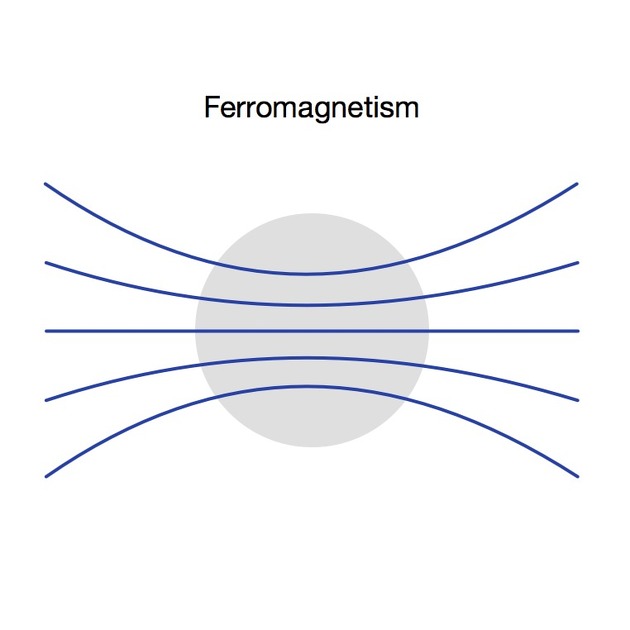Ferromagnetism is a property of materials that generally contain iron (including alloys), nickel, cobalt, and some rare earth mineral alloys 1,2. These materials include magnets, and various objects that might be found in a patient, such as aneurysm clips, parts of pacemakers, and shrapnel.
Technique
Physical principles
Ferromagnetic materials have a large positive magnetic susceptibility, i.e. when placed in a magnetic field, the field strength is much stronger inside the material than outside 1,2.
Ferromagnetic materials are also characterized by being made up of clusters of 1017 to 1021 atoms called magnetic domains, that all have their magnetic moments pointing in the same direction 1. The moments of the domains is random in non-magnetized materials, and point in the same direction in magnetized materials 1.
The ability to remain magnetized when an external magnetic field is removed is a distinguishing factor compared to paramagnetic, superparamagnetic, and diamagnetic materials 1.
Radiographic features
MRI
On MR images, these materials cause susceptibility artifacts characterized by loss of signal and spatial distortion, which is more prominent in ferromagnetic materials than paramagnetic or superparamagnetic materials 2. This can even occur with fragments too small to be seen on plain x-ray. This is a common finding in a cervical spine MRI post anterior fusion or MRI knee post-arthroscopy.





 Unable to process the form. Check for errors and try again.
Unable to process the form. Check for errors and try again.